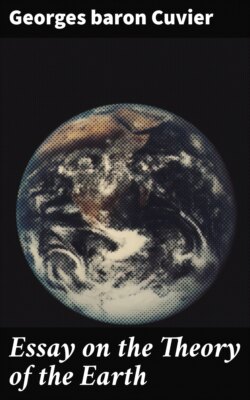Читать книгу Essay on the Theory of the Earth - Georges baron Cuvier - Страница 43
На сайте Литреса книга снята с продажи.
Peat-Mosses and Slips.
ОглавлениеTable of Contents
The turbaries, or peat-mosses, which have been found so generally in the northern parts of Europe, by the accumulation of the remains of sphagna and other aquatic mosses, also afford a measure of time. They increase in height in proportions which are determinate with regard to each place. They thus envelope the small knolls of the lands on which they are formed; and several of these knolls have been covered over within the memory of man. In other places the peat-mosses descend along the valleys, advancing like glaciers, but differing from them in this respect, that, while the glaciers melt at their lower part, the progress of the peat is impeded by nothing. By sounding their depth down to the solid ground, we may estimate their age; and we find, with regard to these peat-mosses, as with regard to the downs, that they cannot have derived their origin from an indefinitely remote period. The same observation may be made with regard to the slips or fallings, which take place with wonderful rapidity at the foot of all steep rocks, and which are still very far from having covered them. But as no precise measures have hitherto been applied to these two agents, we shall not insist upon them at greater length[110].
From all that has been said, it may be seen that nature uniformly speaks the same language, everywhere informing us that the present order of things cannot have commenced at a very remote period. And, what is very remarkable, mankind everywhere speaks as nature, whether we consult the received traditions of the various nations, or examine their moral and political state, and the intellectual attainments which they had made at the period when their authentic records commence.
